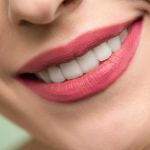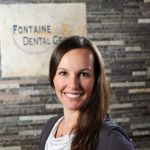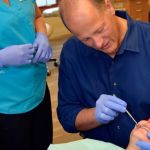Effective Teeth Cleaning Methods: The Ultimate Guide to Maintaining a Healthy Smile
- Why Effective Teeth Cleaning is Important for Your Health
- Types of Effective Teeth Cleaning Methods
- Proper Techniques for Cleaning Your Teeth Effectively
- Essential Tools for Effective Teeth Cleaning
- Real-Life Case Study: Improving Oral Health with Effective Teeth Cleaning
- When to Consult a Dentist for Professional Teeth Cleaning
1. Why Effective Teeth Cleaning is Important for Your Health
Maintaining healthy teeth is crucial not only for a bright smile but also for your overall health. Effective teeth cleaning methods help prevent cavities, gum disease, and other oral health issues that can have a significant impact on your well-being. Regular and thorough cleaning ensures that your teeth remain free from plaque, which can turn into tartar and lead to oral diseases if left untreated.
When you neglect proper teeth cleaning, bacteria build-up can result in issues like bad breath, tooth sensitivity, and even tooth loss. Moreover, poor oral hygiene has been linked to serious health problems, such as heart disease and diabetes. This makes it essential to clean your teeth effectively every day. In this guide, we’ll explore some of the best and most effective teeth cleaning methods that will help you achieve and maintain a healthy smile for years to come.
2. Types of Effective Teeth Cleaning Methods
There are various teeth cleaning methods, each suited to different needs. Let’s take a closer look at some of the most effective options:
2.1 Brushing with a Toothbrush
Brushing your teeth with a toothbrush is the most common and essential method of cleaning your teeth. It helps remove food particles and plaque buildup that can lead to tooth decay and gum disease. The key to effective brushing is using the right technique and the right tools. Brushing your teeth twice a day, for at least two minutes each time, is highly recommended for maintaining good oral hygiene.
2.2 Flossing
Flossing is a vital part of effective teeth cleaning, as it removes food particles and plaque that a toothbrush can’t reach, especially between the teeth and under the gumline. Flossing once a day can help prevent cavities and gum disease. It's particularly important for those who have tight spaces between their teeth or suffer from issues like gingivitis.
2.3 Mouthwash
Using mouthwash can be an effective method to rinse away bacteria and freshen your breath. Antiseptic mouthwash can help reduce plaque and prevent gum disease, while fluoride mouthwash can strengthen your tooth enamel. Mouthwash should be used as a supplementary cleaning method along with brushing and flossing for optimal results.
2.4 Professional Teeth Cleaning
While daily brushing and flossing are essential, professional teeth cleaning performed by a dentist or hygienist is also necessary for maintaining oral health. During a professional cleaning, plaque and tartar are removed from hard-to-reach areas, and your teeth are polished. It’s generally recommended to have a professional cleaning at least once every six months.
3. Proper Techniques for Cleaning Your Teeth Effectively
Using the right techniques is just as important as the cleaning method itself. Here are some essential tips for cleaning your teeth effectively:
3.1 Proper Brushing Technique
To properly brush your teeth, hold your toothbrush at a 45-degree angle to your gums. Gently brush in short, circular motions to remove plaque without damaging your gums. Avoid aggressive scrubbing, as this can wear down tooth enamel and cause gum recession. Be sure to brush all surfaces of your teeth, including the outer, inner, and chewing surfaces. Don’t forget to brush your tongue and the roof of your mouth to remove bacteria and freshen your breath.
3.2 Flossing Technique
When flossing, break off about 18 inches of floss and wind most of it around your middle fingers, leaving about 1-2 inches to work with. Gently slide the floss between your teeth and curve it around the tooth in a "C" shape. Move the floss up and down against the sides of the teeth to remove plaque and debris. Make sure to use a clean section of floss as you move from tooth to tooth to avoid transferring bacteria.
3.3 Using Mouthwash Correctly
To get the most out of mouthwash, swish it around your mouth for 30 seconds to a minute, ensuring it reaches all areas of your mouth. Don’t swallow mouthwash, and avoid eating or drinking for at least 30 minutes after use to allow it to work effectively. Choose a mouthwash with fluoride if you're looking for additional enamel protection or one with antiseptic properties for fighting gum disease.
4. Essential Tools for Effective Teeth Cleaning
Along with the right techniques, using the proper tools can make a significant difference in the effectiveness of your teeth cleaning routine. Here are some essential tools you should have in your dental care arsenal:
4.1 Toothbrush
Choose a toothbrush that has soft bristles and fits comfortably in your mouth. Both manual and electric toothbrushes can be effective, but electric toothbrushes tend to provide a more consistent brushing motion and may be easier for some people to use. Look for a toothbrush with the American Dental Association (ADA) Seal of Acceptance for assurance of its quality.
4.2 Dental Floss
Dental floss comes in various types, including waxed, unwaxed, and flavored. The key is to choose a floss that works best for you and your teeth. Some people may prefer a floss with a slight wax coating, which slides more easily between teeth. For those who find traditional floss challenging, floss picks or water flossers can be a great alternative.
4.3 Mouthwash
When selecting mouthwash, choose one that addresses your specific needs, such as antibacterial properties for gum health or fluoride for enamel protection. Look for mouthwashes that are alcohol-free, as alcohol can dry out the mouth and contribute to bad breath.
5. Real-Life Case Study: Improving Oral Health with Effective Teeth Cleaning
John, a 42-year-old man, had been neglecting his oral hygiene for years and was struggling with gum disease and sensitivity. After seeking advice from his dentist, he started following a consistent oral care routine using proper brushing techniques, flossing daily, and using mouthwash. Within a few months, his gums showed significant improvement, and his tooth sensitivity was much reduced. This transformation underscores the importance of regular and effective teeth cleaning for maintaining long-term oral health.
6. When to Consult a Dentist for Professional Teeth Cleaning
While maintaining a regular teeth cleaning routine at home is crucial, it’s important to consult your dentist for professional cleanings and evaluations. If you notice any signs of oral issues, such as bleeding gums, persistent bad breath, or unexplained tooth sensitivity, it’s time to schedule an appointment. Professional cleanings remove tartar buildup, which brushing and flossing can’t reach, and they help prevent serious dental problems.
If you’re looking for expert advice and professional dental care, visit Dentistry Toothtruth to learn more about effective teeth cleaning methods and products designed to enhance your oral health.







 McDowell Dentistry of Goodyear4.0 (279 review)
McDowell Dentistry of Goodyear4.0 (279 review) Alliance Orthodontics4.0 (23 review)
Alliance Orthodontics4.0 (23 review) Fontaine Dental Group | St John4.0 (177 review)
Fontaine Dental Group | St John4.0 (177 review) Elmwood Park Cosmetic Dentistry5.0 (1 review)
Elmwood Park Cosmetic Dentistry5.0 (1 review) Dover Dental Center4.0 (44 review)
Dover Dental Center4.0 (44 review) Associated Orthodontists - Joliet4.0 (132 review)
Associated Orthodontists - Joliet4.0 (132 review) The Importance of Oral Health Education During Pregnancy for a Healthy Pregnancy
The Importance of Oral Health Education During Pregnancy for a Healthy Pregnancy Best Tips for Brushing Your Teeth Properly for Healthy Gums: Essential Techniques for Oral Health
Best Tips for Brushing Your Teeth Properly for Healthy Gums: Essential Techniques for Oral Health Why Skipping Dental Checkups Can Lead to Bigger Oral Health Problems
Why Skipping Dental Checkups Can Lead to Bigger Oral Health Problems Advantages of Porcelain Dental Restorations
Advantages of Porcelain Dental Restorations How Can Diabetes Cause Tooth and Gum Problems? Preventing and Managing Oral Health Issues
How Can Diabetes Cause Tooth and Gum Problems? Preventing and Managing Oral Health Issues Healthy Habits for Promoting Good Oral Health and Hygiene: Tips for a Healthy Smile
Healthy Habits for Promoting Good Oral Health and Hygiene: Tips for a Healthy Smile